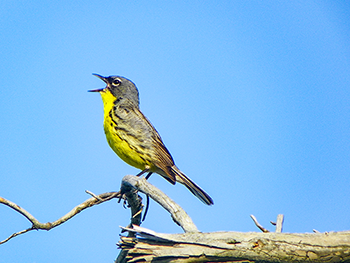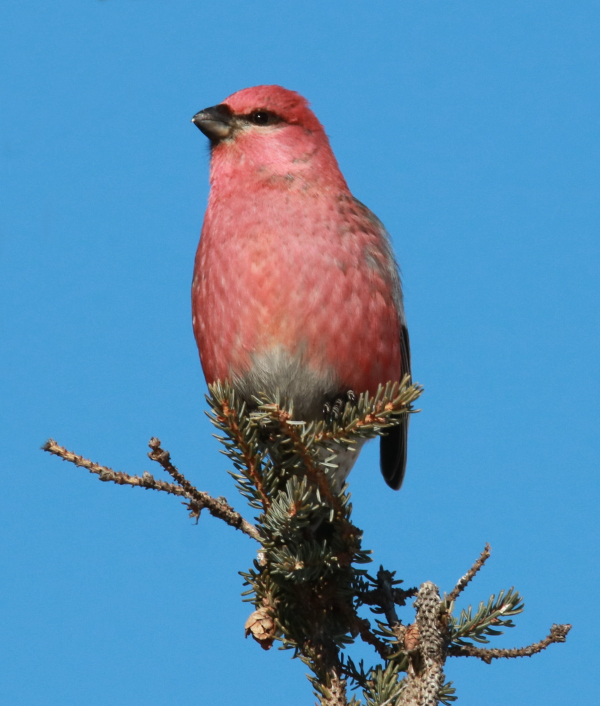Kirtland’s warbler census monitors recovery of Michigan’s rare songbird
 The Kirtland’s warbler is one of the rarest members of the wood warbler family. The only places on Earth it currently nests are mainly in Michigan’s northern Lower and Upper peninsulas, and a few locations in Wisconsin and the province of Ontario.
The Kirtland’s warbler is one of the rarest members of the wood warbler family. The only places on Earth it currently nests are mainly in Michigan’s northern Lower and Upper peninsulas, and a few locations in Wisconsin and the province of Ontario.
In northern Michigan, June 6-20 is a special time, when dozens of surveyors are in large jack pine forests listening for the unique song of the male Kirtland’s warbler.
“We have a great group of DNR, U.S. Forest Service and U.S. Fish and Wildlife Service staff members, as well as volunteers, who are trudging through young, thick jack pine in the early morning hours,” said Department of Natural Resources wildlife supervisor Keith Kintigh. “The reward is getting to hear that singing male Kirtland’s warbler, which is the way we actually census the population.”
The Kirtland’s warbler census is a tool managers use to compare population numbers relative to recovery goals by listening for the male’s song. Kirtland’s warbler numbers had been very low, under 200 nesting pairs, in the mid-1980s. Michigan became the focus for habitat management, since it has been a primary location for the birds’ reproduction.
Kirtland’s warblers spend eight months wintering in the Bahamas. The males arrive back in Michigan between May 3 and May 20, a few days ahead of the females. The males establish and defend territories and then court the females when they arrive. The males’ song is loud, yet low-pitched, ending with an upward inflection – easily recognized to identify the presence of a Kirtland’s warbler.
Additionally, the presence or absence of Kirtland’s warblers determines if protection of that area is needed and allows evaluation of different habitat management techniques. The habitat requirements for Kirtland’s warbler are very specific; they prefer large blocks of young jack pine, usually hundreds of acres in size. The Kirtland’s warbler is a ground-nester, often using the living branches of 5- to 20-foot-tall jack pine trees to conceal their nests, so jack pine trees must be actively managed. Large areas of sandy soils are planted with jack pine and then cut decades later, on specific intervals, to achieve the perfect-aged stands.
The Kirtland’s warbler census allows wildlife managers to determine if the number of nesting birds is staying stable, increasing or decreasing. In 1976, the first Kirtland’s Warbler Recovery Plan was developed, and then updated in 1985, providing state and federal agencies with a guide to direct management efforts toward increasing the Kirtland’s warbler population. The primary recovery objective is to establish and sustain a Kirtland’s warbler population throughout its known range at a minimum level of 1,000 pairs.
Through the Kirtland’s warbler census, Michigan has been able to report having greater than the minimum level from 2002 to the present.
“The Kirtland’s warbler recovery is an example of great conservation through cooperation,” said Kintigh. “Many partners have been involved in this success story, including the U.S. Forest Service, U.S. Fish and Wildlife Service, and more recently Huron Pines and the Nature Conservancy.”
To learn more about the Kirtland’s warbler and how to help, visit www.michigan.gov/wildlife.






